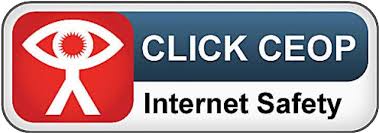Online Safety
INTERNET SAFETY ADVICE TO PARENTS
Internet safety and addressing online risk
Although the benefits of the internet far outweigh the potential dangers, parents must be aware of the very real risks their children may be exposed to online.
WHAT IS E-SAFETY?
E-safety is a term used to promote the protection of people from the unwanted consequences of using electronic media including the internet, mobile phones and social networks.
CYBER BULLYING
Cyber bullying is the misuse of digital technologies or communications to bully a person or a group, typically through messages or actions that are threatening and/or intended to cause offence, anxiety or humiliation. It comes in many different forms, and is particularly damaging as the abuse is inescapable - it follows the target everywhere.
PRIVACY AND INFORMATION SHARING
Most social media sites allow young people to host a public profile, which presents many concerns regarding their privacy. If privacy settings are not applied, the content they publish on their profiles will be accessible to millions of people worldwide.
This information can potentially include:
- Personal contact details
- Photographs or videos of themselves and their friends
- The names and addresses of the schools and the clubs they attend
- Their exact locations at any given time through the use of location tagging features
The internet is like a giant USB that saves all the things that we publish on line. The collective history of this activity is often referred to as a digital footprint, and can be accessed by anyone through a simple online search. Even if your child uses privacy settings on social media platforms, they will not be able to stop their connections from passing the content they post on to others.
If their activity is offensive, they may find themselves in trouble with peers, the school or even the police. Universities and employers have been known to check the online profiles of applications, so negative activity can also affect a young person's educational and professional opportunities later on in life. It is therefore extremely important that young people understand that cyber world is the real world, with very real consequences.
GROOMING AND SEXUAL ABUSE
Online grooming is an action of an adult befriending a child with the intent to prepare them for sexual abuse. It is not a one off event but a process of engaging with them, tapping into their hobbies and vulnerabilities and building a falsely perceived connection.
Social media, interactive gaming and chat rooms can be the first point of contact. Abusers are able to hide behind false online identities and talk to young people with greater ease, out of the direct observations of others.
If your child has been receiving inappropriate communications from an adult, you should report this on the Child Exploitation & Online Protection (CEOP) website.
EXPOSURE TO PORNOGRAPHIC OR VIOLENT MATERIAL
Inappropriate content doesn't have to be intentionally sourced. Often children will stumble across it by chance: disguised under seemingly innocent urls, attachments, or even circulated on leading social media sites.
The most concerning material includes:
- Extreme or abusive pornography
- Excessive violence or explicit physical attacks
- Hateful material expressing racist, sexist, homophobic or transphobic opinion
- Harmful advice encouraging eating disorders, self-harm or suicide
SEXUALISATION
Young people, most commonly girls, often feel under pressure to act provocatively or be perceived in a sexual way. This pressure can come directly from peers or partners, or indirectly through the commercialisation of sex in mainstream media and marketing industries.
When using the internet, this can motivate young people to:
- Post provocative images of themselves on social media
- Perform sexual acts over webcam, send sexually explicit photographs to another person or pressurise others into doing so
- Search for pornographic images and video
Here are some websites that you may find useful for further information:
- https://www.ceop.police.uk/
- https://www.net-aware.org.uk/
- https://www.saferinternet.org.uk/advice-centre/parents-and-carers
- https://www.childnet.com/parents-and-carers
- https://www.thinkuknow.co.uk/parents/
- https://www.nspcc.org.uk/keeping-children-safe/online-safety/
- https://www.gov.uk/government/publications/child-safety-online-a-practical-guide-for-parents-and-carers/child-safety-online-a-practical-guide-for-parents-and-carers-whose-children-are-using-social-media

